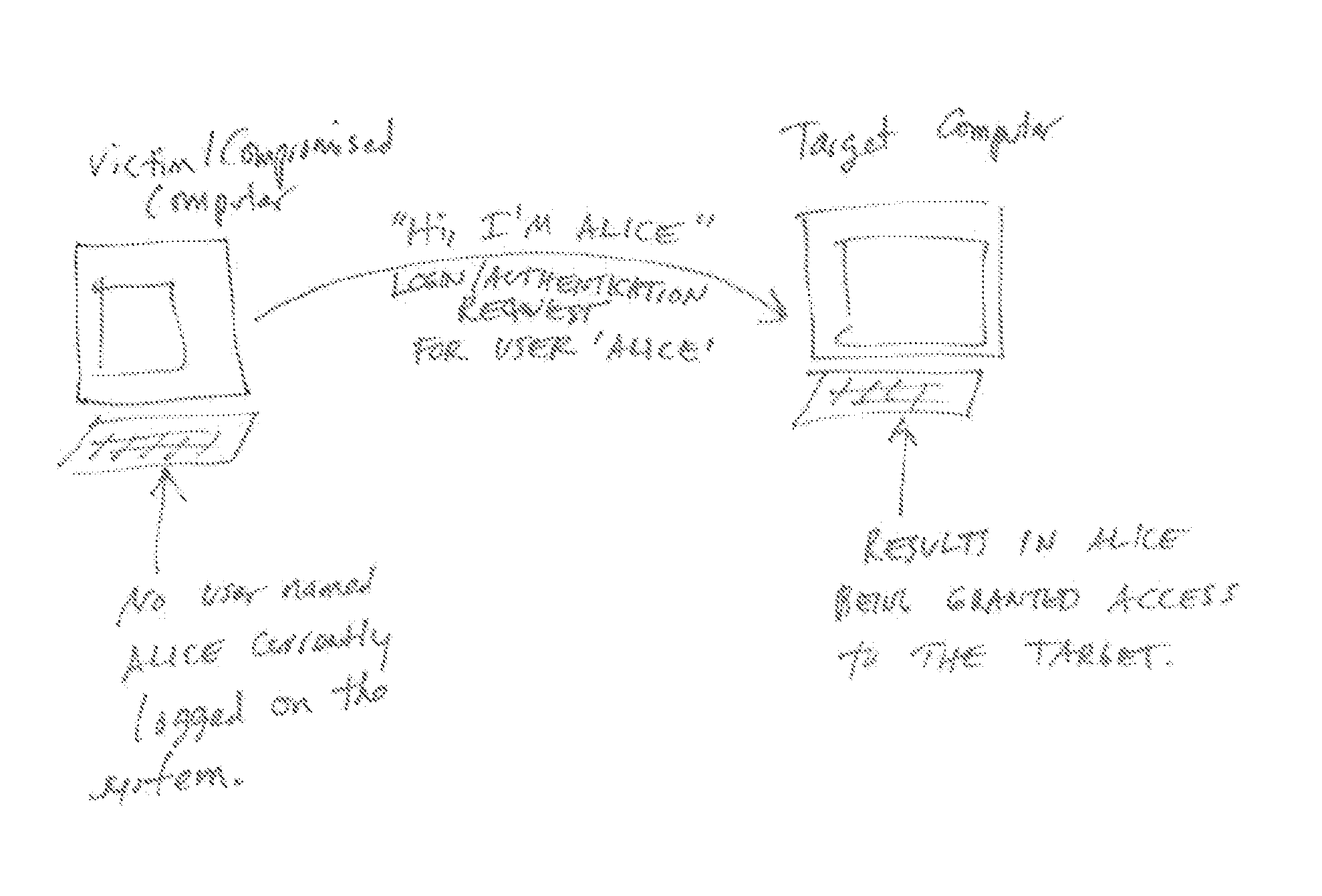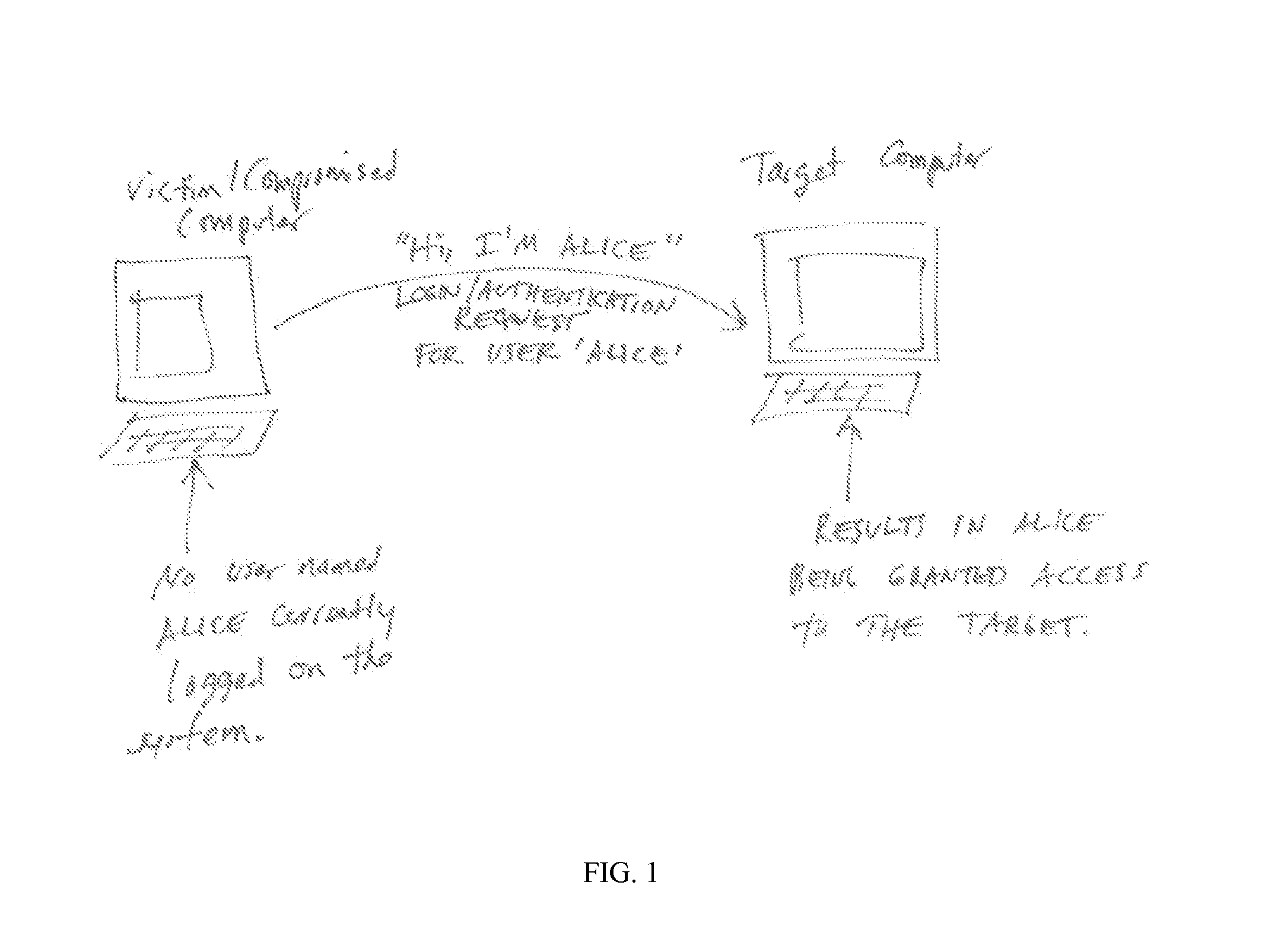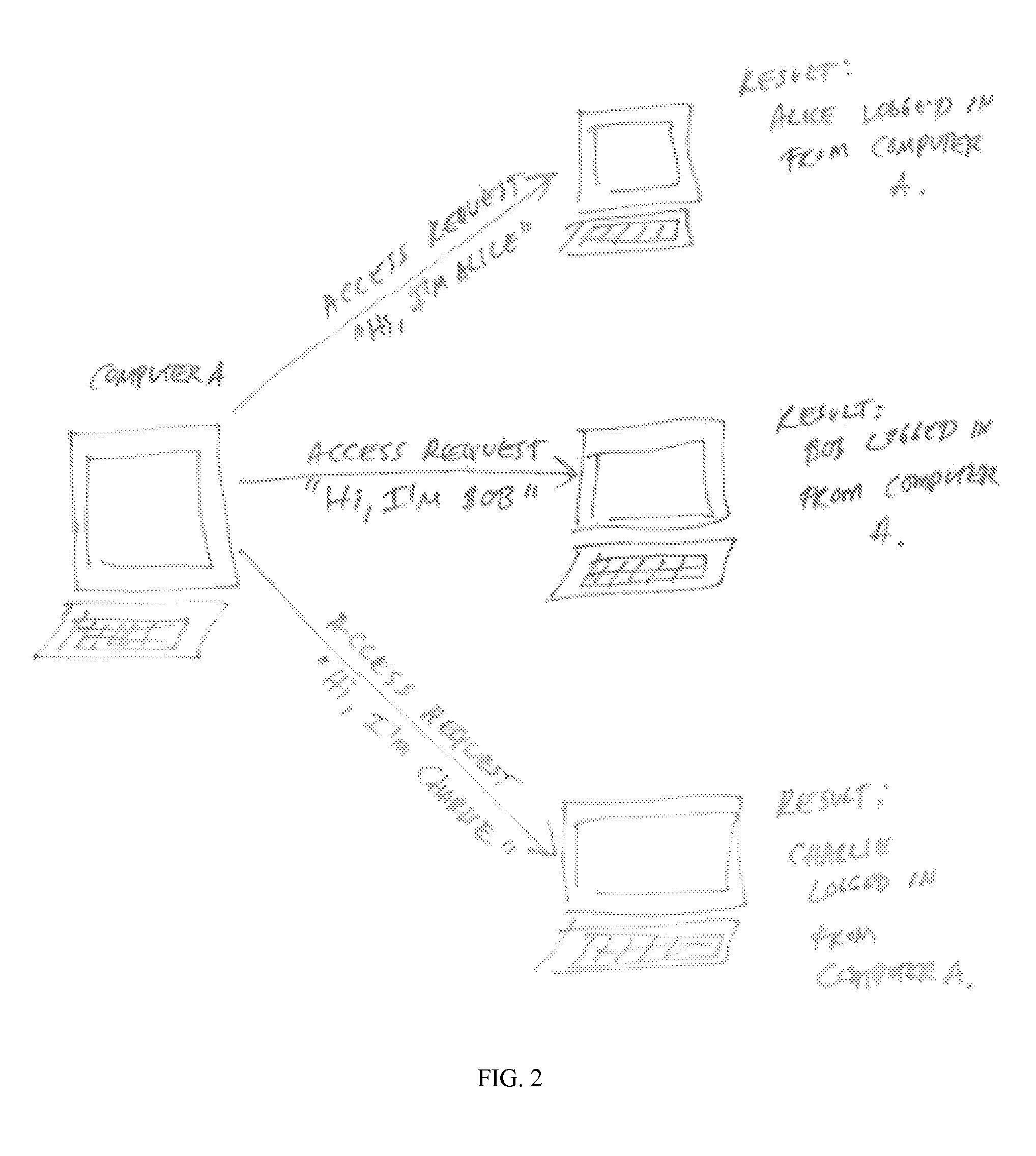System, apparatus and method for identifying and blocking anomalous or improper use of identity information on computer networks
a technology of identity information and computer network, applied in the field of computer network, can solve the problems of computer network being vulnerable to specific types of account forgery and identity abuse attacks, entire network at risk, and types of attacks are highly undesirable, so as to reduce the potential for disruption
- Summary
- Abstract
- Description
- Claims
- Application Information
AI Technical Summary
Benefits of technology
Problems solved by technology
Method used
Image
Examples
example 1
[0036]Examining the system registry for loaded profiles in HKEY_USERS registry or another workstation data artifact. FIG. 6 shows a compromised computer sending an authentication or access request to a target computer. A security device according to the invention is monitoring communications and detects the request. The security device causes a query to be sent to the originating computer to determine from the HKEY_USER registry to determine if the sender of the communication is logged in. If examination of the HKEY_USER registry reflects that the sender is logged on, the security device may be allow the request to pass to the intended recipient. If examination of the HKEY_USER registry reflects that the sender is not logged on, the security device may take any one or more of several actions, including dropping the request from the network, reporting the request to an administrator and / or notifying the purported sender, the target, and / or any other parties. According to an aspect of...
example 2
[0037]Examining local system log data to identify interactive logins or failed login / pass-the-hash signatures. FIG. 7 shows a compromised computer sending an authentication or access request to a target computer. A security device according to the invention is monitoring communications and detects the request. The security device causes a query to be sent to the originating computer to determine from the local system log data any interactive logins, failed logins or other anomalous login events. If examination of the log data reflects that the sender is logged on, the security device may be allow the request to pass to the intended recipient. If examination of the log data reflects that the sender is not logged on, or if it reflects other anomalous login data, the security device may take any one or more of several actions, including dropping the request from the network, reporting the request to an administrator and / or notifying the purported sender, the target, and / or any other pa...
example 3
[0038]Querying WINS servers for login information for a particular user. FIG. 8 shows a compromised computer sending an authentication or access request to a target computer. A security device according to the invention is monitoring communications and detects the request. The security device causes a query to be sent to a WINS server for login information relating to the user from request is purported to have been sent. If examination of the information from the WINS server, either alone or in conjunction with information obtained from the originating computer, reflects that the sender is logged on, the security device may be allow the request to pass to the intended recipient. If examination of the information from the WINS server, either alone or in conjunction with information obtained from the originating computer, reflects that the sender is not logged on, or if it reflects other anomalous login data, the security device may take any one or more of several actions, including d...
PUM
 Login to View More
Login to View More Abstract
Description
Claims
Application Information
 Login to View More
Login to View More - R&D
- Intellectual Property
- Life Sciences
- Materials
- Tech Scout
- Unparalleled Data Quality
- Higher Quality Content
- 60% Fewer Hallucinations
Browse by: Latest US Patents, China's latest patents, Technical Efficacy Thesaurus, Application Domain, Technology Topic, Popular Technical Reports.
© 2025 PatSnap. All rights reserved.Legal|Privacy policy|Modern Slavery Act Transparency Statement|Sitemap|About US| Contact US: help@patsnap.com



